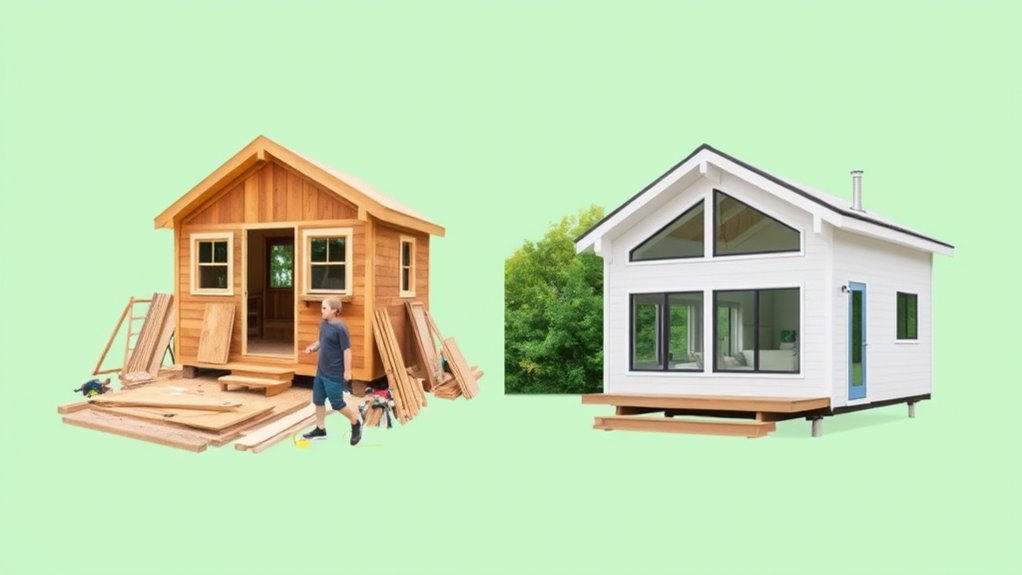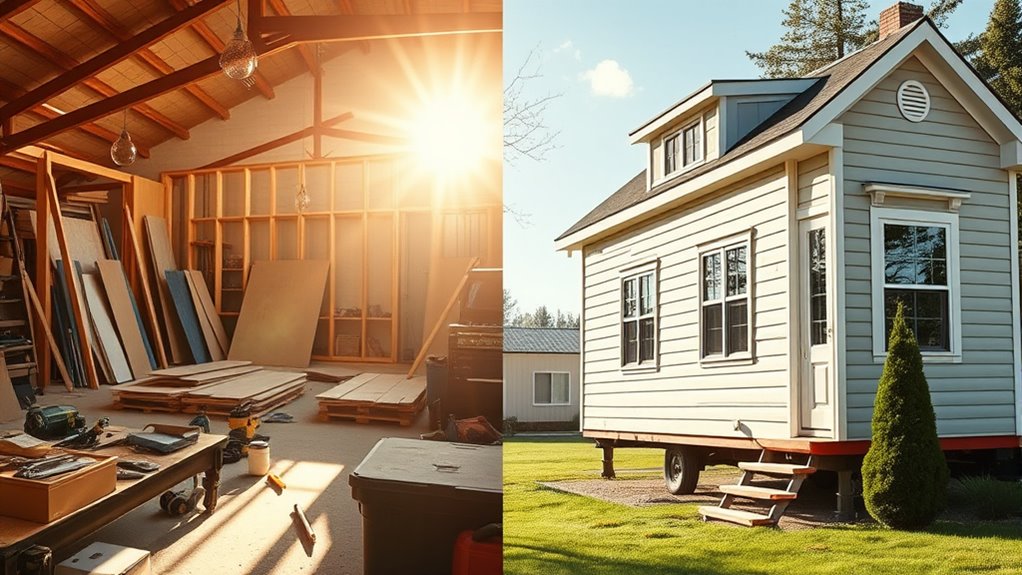Did you know that choosing between a DIY or professional tiny-house build could hinge on more than just budget? Many people underestimate how much skill, time, and planning are involved in creating a safe, code-compliant home. Making the right decision requires weighing your abilities against your project’s complexity and your long-term goals. To navigate this choice confidently, consider these key questions that could save you both time and resources.
Key Takeaways
- Assess your skill level and experience with carpentry, electrical, and plumbing to determine if DIY is feasible.
- Consider your budget and weigh potential savings against possible costs from mistakes or delays.
- Evaluate project complexity; complex designs often require professional expertise for safety and code compliance.
- Factor in your available time and schedule flexibility to decide if you can commit to a longer DIY process.
- Prioritize safety, quality, and long-term durability, understanding that professionals typically ensure higher standards.

Deciding between building your tiny house yourself or hiring professionals often hinges on your skills, budget, and timeline. If you’re considering a DIY approach, one of the main appeals is the potential for cost savings. When you do the work yourself, you eliminate labor costs that can considerably inflate the overall price if you hire experts. This can make your tiny house project more affordable, especially if you’re comfortable handling carpentry, electrical, and plumbing tasks. However, keep in mind that DIY projects often require purchasing tools and materials, which can add up. Plus, if you’re inexperienced, you might make mistakes that lead to costly repairs later. Carefully weighing these factors helps you decide if the initial savings are worth the possible setbacks.
Choosing DIY builds can save money but may involve risks and extra costs.
Time commitment is another critical factor. Building a tiny house yourself usually takes more time than hiring professionals, who have experience and streamlined workflows. If you have a flexible schedule and enjoy hands-on work, tackling the build can be rewarding and fulfilling. But if you’re on a tight timeline—say, you need your tiny house ready within a few months—you might find that DIY construction stretches your schedule. In contrast, professional builders can complete the project faster because they have teams, experience, and often access to specialized equipment. If time is of the essence, outsourcing the work might be the smarter choice, even if it costs more upfront.
Beyond cost savings and time commitment, you should also consider your skill level and the complexity of the tiny house design. If you’re handy, confident with tools, and willing to learn as you go, a DIY build can be a satisfying challenge. On the other hand, if your skills are limited or the design requires complicated systems, hiring professionals ensures the build meets safety standards and local building codes. Professionals can also handle permits and inspections, saving you headaches down the line.
Finally, think about the long-term implications. A DIY build might save money initially, but if mistakes lead to leaks, insulation issues, or structural problems, those errors could end up costing more to fix later. Conversely, a professional build might be pricier but often guarantees quality and durability, giving you peace of mind. In the end, your decision should balance your budget, timeline, skills, and how much you’re willing to invest in the process. Additionally, consider work-life balance when planning your project to avoid burnout and maintain enjoyment throughout the build.
Conclusion
Deciding whether to DIY or hire pros depends on your skills, budget, and project complexity. Did you know that DIY tiny-house builders save up to 30% on costs but often spend more time? If you’re comfortable with the work and creative challenges, a DIY build could be rewarding. Otherwise, investing in professionals might guarantee safety and efficiency. Weigh your options carefully to create a cozy, compliant tiny home that fits your lifestyle perfectly.
Hi, I’m Emma. I’m the Editor in Chief of Tiny House 43, a blog all about tiny houses. While tree houses are often associated with childhood, they can be the perfect adult retreat. They offer a cozy space to relax and unwind, surrounded by nature. And since they’re typically built on stilts or raised platforms, they offer stunning views that traditional homes simply can’t match. If you’re looking for a unique and romantic getaway, a tree house tiny house might just be the perfect option.










